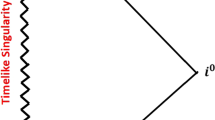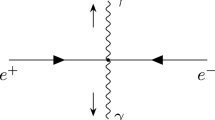Abstract
We present a general solution of the Einstein gravitational field equations for the static spherically symmetric gravitational interior space-time of an isotropic fluid sphere. The solution is obtained by transforming the pressure isotropy condition, a second order ordinary differential equation, into a Riccati type first order differential equation, and using a general integrability condition for the Riccati equation. This allows us to obtain an exact non-singular solution of the interior field equations for a fluid sphere, expressed in the form of infinite power series. The physical features of the solution are studied in detail numerically by cutting the infinite series expansions, and restricting our numerical analysis by taking into account only n=21 terms in the power series representations of the relevant astrophysical parameters. In the present model all physical quantities (density, pressure, speed of sound etc.) are finite at the center of the sphere. The physical behavior of the solution essentially depends on the equation of state of the dense matter at the center of the star. The stability properties of the model are also analyzed in detail for a number of central equations of state, and it is shown that it is stable with respect to the radial adiabatic perturbations. The astrophysical analysis indicates that this solution can be used as a realistic model for static general relativistic high density objects, like neutron stars.










Similar content being viewed by others
References
K. Schwarzschild, Phys.-Math. Kl. 23, 189 (1916)
R.C. Tolman, Phys. Rev. 55, 364 (1939)
H.A. Buchdahl, Phys. Rev. 116, 1027 (1959)
M.S.R. Delgaty, K. Lake, Comput. Phys. Commun. 115, 395 (1998)
S. Rahman, M. Visser, Class. Quantum Gravity 19, 935 (2002)
D. Martin, M. Visser, Class. Quantum Gravity 20, 3699 (2003)
K. Lake, Phys. Rev. D 67, 104015 (2003)
D. Martin, M. Visser, Phys. Rev. D 69, 104028 (2004)
P. Boonserm, M. Visser, S. Weinfurtner, Phys. Rev. D 71, 124037 (2005)
P. Boonserm, M. Visser, S. Weinfurtner, Phys. Rev. D 76, 044024 (2007)
P. Boonserm, M. Visser, Int. J. Mod. Phys. D 17, 135 (2008)
K. Lake, Phys. Rev. D 77, 127502 (2008)
C. Grenon, P.J. Elahi, K. Lake, Phys. Rev. D 78, 044028 (2008)
J. Loranger, K. Lake, Phys. Rev. D 78, 127501 (2008)
C.M.G. de Sousa, E.A. de Araujo, Mon. Not. R. Astron. Soc. 415, 918 (2011)
N. Dadhich, A. Molina, A. Khugaev, Phys. Rev. D 81, 104026 (2010)
L.D. Landau, E.M. Lifshitz, Classical Theory of Fields (Pergamon, Oxford, 1976)
M.K. Mak, T. Harko, Appl. Math. Comput. 218, 10974 (2012)
M.K. Mak, T. Harko, Appl. Math. Comput. 219, 7465 (2013)
H. Knutsen, Mon. Not. R. Astron. Soc. 232, 163 (1988)
S. Chandrasekhar, Astrophys. J. 140, 417 (1964)
J.M. Bardeen, K.S. Thorne, D.W. Meltzer, Astrophys. J. 145, 505 (1966)
J.M. Lattimer, M. Prakash, in From Nuclei to Stars: Festschrift in Honor of Gerald E. Brown, ed. by S. Lee (World Scientific, Singapore, 2011), pp. 275–305. arXiv:1012.3208
P.B. Demorest, T. Pennucci, S.M. Ransom, M.S.E. Roberts, J.W.T. Hessels, Nature 467, 1081 (2010)
O. Barziv, L. Karper, M.H. van Kerkwijk, J.H. Telging, J. van Paradijs, Astron. Astrophys. 377, 925 (2001)
H. Quaintrell, A.J. Norton, T.D.C. Ash, P. Roche, B. Willems, T.R. Bedding, I.K. Baldry, R.P. Fender, Astron. Astrophys. 401, 303 (2003)
Acknowledgements
We would like to thank to the anonymous referee for comments and suggestions that helped us to improve our manuscript.
Author information
Authors and Affiliations
Corresponding author
Rights and permissions
About this article
Cite this article
Mak, M.K., Harko, T. Isotropic stars in general relativity. Eur. Phys. J. C 73, 2585 (2013). https://doi.org/10.1140/epjc/s10052-013-2585-5
Received:
Revised:
Published:
DOI: https://doi.org/10.1140/epjc/s10052-013-2585-5




